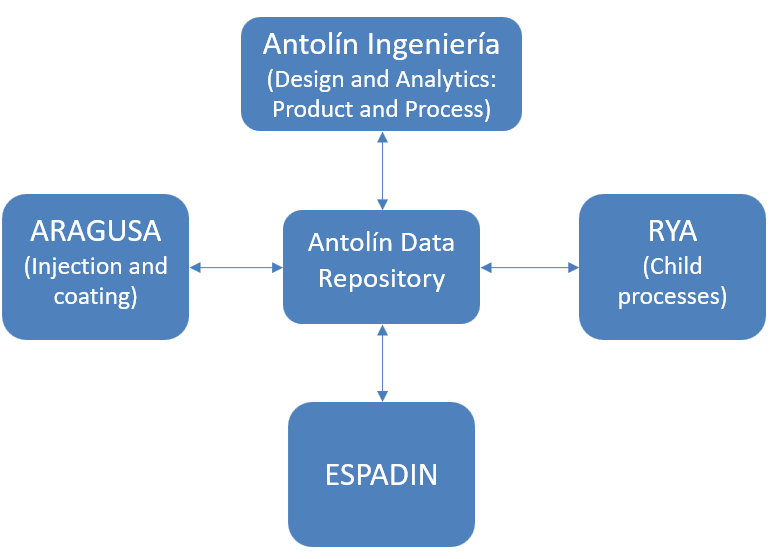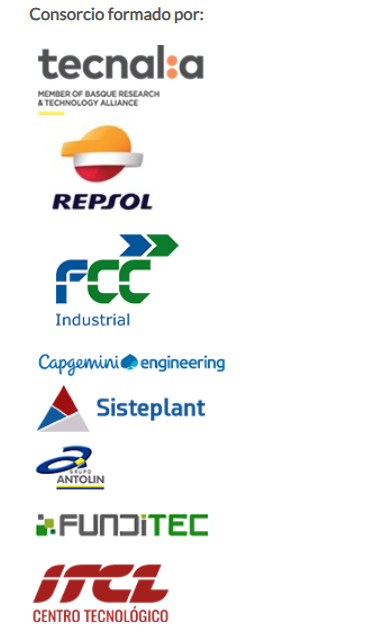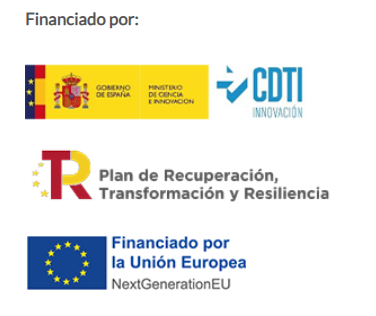FCC Industrial follows the steps of the FCC Group when it comes to firmly committing to innovation and development. Through its different lines of business, it participates in R & D projects of very different types thanks, in part, to the synergies between the different work teams and divisions.
Based on the experience of our teams, acquired during years of work in complex international projects and with our own methodology, R & D & I projects are being developed in:
- LNG storage
- Big Data
- Cybersecurity
Important projects
Optiport
ExpandOptiPort is a software tool developed for port managers, as support in making decisions related to the management and planning of the port and its resources.
OptiPort allows the definition by the user of possible future scenarios, based on:
- Elements used by the ship: docks, berths, monobuoys, anchorages, navigation ways, etc.
- Historical data of climatic agents: waves, wind, fog, etc.
- Ship traffic, characterized by variables such as the type of vessel, its size, preferred destinations, arrival patterns, operation times, demand for port services (pilotage, towing and mooring), etc.
- Port services offer.
- Management criteria, such as ships priority, security, etc.
Once the Optiport scenario has been defined, it allows the simulation of the maritime operations of a port, using probabilistic techniques:
- Predicts the quality of port operations.
- Estimate the uncertainty of the effectiveness of a management and planning policy.
- Compare the effectiveness of different alternatives or management and planning policies.
- Calculate a set of port management indicators.
OptiPort has been developed by FCC Industrial and PROES, with the collaboration of the Bahia Port Authority of Algeciras as a pilot port.
Avanza Galerias
ExpandAvanza Galerias is a system for managing the service galleries of the city of Madrid, an infrastructure of some 160 km of underground tunnels thanks to which some energy, gas, water and telecommunications companies provide their services to citizens. These galleries are also used by the state's security forces.
It is a multi-platform web system that allows the control of fire detection devices, gases, CCTV, audio and public address systems, access control and the management of authorizations issued by the City Council to carry out work and access to galleries.
Both the staff of the company in charge of maintenance and supervisory staff of the City take advantage of the mobility by allowing them to access from different devices and locations for the performance of their daily tasks.
The system, physically deployed in the control center of service galleries of the City of Madrid, has been designed to enjoy the benefits of virtualization, redundancy, scalability and high availability, with the existence of a secondary control center.
Madeira
ExpandSupply and installation of ITS systems (Intelligent Transportation Systems) for the control and management of highway traffic including communications network, video surveillance systems, shadow toll, variable signaling, roadside assistance systems and control integration. road tunnels (3 tunnels longer than 1,000m, 7 tunnels between 460m and 1,000m and 20 tunnels less than 460m long).
The fundamental elements are:
- The communication system hierarchical network transport fiber optic (10G) and mixed distribution (Fe / FO) that centralizes all services and equipment of different bandwidth requirements for data (250 kbps) audio (64kbps) and video (6.0Mbps).
- Centralized control center with a hardware architecture that integrates virtualized servers, bi-screen graphic stations and High Definition Video Wall.
- Operation software management system that manages all traffic subsystems for tunnels: Ventilation, Automatic Incident Detection, SOS Posts, Fire Detection and Extinction, etc).
- Operation software management system that manages road traffic subsystems: variable signaling panels, counting stations and vehicular classification for shade toll, traffic gauging.
In total the project developed allows the integral management of more than 50 km of dual carriageway with 2 + 2 lanes including 30 tunnels.
Coatzacoalcos
ExpandSupply and installation of ITS control and management systems for the submerged road tunnel that connects the two banks of the mouth of the Coatzacoalcos River with the Gulf of Mexico, Veracruz province. The project allows the control of a 1,200m bi-tube tunnel under the river, interconnecting the two provinces of Allende and Coatzacoalcos.
The ITS control and management system of the tunnel, integrates all the electromechanical installations of the tunnel, system of emergency posts on the road, variable signaling inside and outside the tunnel, meteorological stations, closed circuit television, classification and counting stations of vehicles and RTU stations of distributed control.
The communications system is implemented through a redundant local control system, with RTUs in master-slave configuration in each of the technical rooms of each tunnel mouth and virtualized RTUs in the control center, so as to guarantee the integrity of the control of systems in situations of fall or functional degeneration.
The centralized Control Center with a hardware architecture that integrates physical and virtualized servers, bi-screen graphic stations and high definition Video Wall. The fully developed operating software management system (AVANZA TUNEL) manages all traffic subsystems for tunnels (Ventilation, Automatic Incident Detection, SOS poles, Fire detection and extinction, PMV, etc.).
Development of the interlock in the Medellin Metro
ExpandThe scope of the project involved the modernization of three interlocks of line A of the Medellín Metro, to migrate them from an original relay-based technology to a platform that integrates industrial PLCs with a redundant input and output architecture.
The fundamental elements of the project can be summarized as follows:
- Replacement of the current control and control system as well as security
- Incorporation into the system of a new detour with its corresponding elements in order to improve the efficiency of the line
- Supply of a continuous train control system compatible with the originally installed system.
- Total compatibility with existing signaling systems, traffic systems, the current train fleet and equipment and track elements used in the system
- Modernization of the elements without service interruption
The whole project is developed under the protection and certification of European standards for the railway sector (CENELEC).
Cybersec
ExpandCYBERSEC (Research in Emerging technologies to achieve Cyber Secure and Resilient Infrastructures) is a multisectoral and multidisciplinary R&D Consortium with effective collaboration, formed by 8 top-level technology and infrastructure management companies, led by VODAFONE and supported by 5 Organizations Research Center in Spain.
The objective of the CYBERSEC project is to investigate various technologies, techniques, tools, methodologies and knowledge aimed at developing technological solutions for securing against cyberattacks of highly critical connected environments, such as Industry 4.0, Smart Cities or critical Infrastructures.
New digital technologies are being massively adopted in practically all socioeconomic sectors, from industry to agriculture, through health, defense, construction or the global management of public services. Likewise, digital technologies are in continuous development, providing new and better solutions. All this implies a significant improvement in the management of practically all socio-economic processes, in terms of cost reduction, quality improvement, generation of new services, democratization of information and improvement of user experiences.
However, this high level of digitization, together with the continuous profusion of new technologies, generates important vulnerabilities in the systems, which are exploited by cybercriminals (hackers) to carry out attacks in order to interrupt the service, theft or hijacking of stored information or identity theft. In addition to attacks, these systems are also exposed to system failures, human errors, and environmental disruptions.
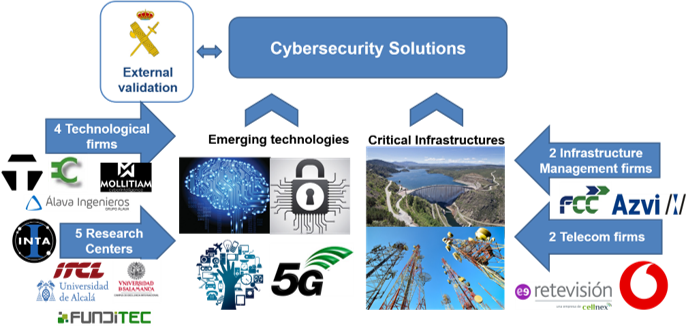
The Centre for the Development of Industrial Technology (CDTI), answering to the Ministry of Science and Innovation, has awarded a grant for the development of the Project “CYBERSEC: RESEARCH IN EMERGING TECHNOLOGIES TO ACHIEVE CYBER SECURE AND RESILIENT INFRASTRUCTURES” within the call for the CIEN-20200003 Strategic Programme, with reference number IDI-20201114.
Financed by:

Desire
ExpandThe multipurpose mixed and augmented reality System Demonstrator is an R&D&I project of FCC Industrial's Systems Division.
The aim of the DESIRE project is to research into various technologies, with the aim of acquiring the knowledge that will enable the development of the software and hardware components that will configure a low-cost technological solution, which will be a viable alternative to the current visual systems based on the projection of traditional simulators through the use of virtual reality glasses and stereo micro-camera systems.
Many of today's simulators consist of a more or less realistic reproduction of the vehicle to be simulated (aircraft cockpit, driving position of a car, train, etc.), or of the room in which the exercise to be simulated takes place (bridge of a ship, control tower of an airport, etc.), and a visual projection system that synthetically represents the scenario in which the simulation exercise takes place. These visual systems, with which current simulators are equipped, are usually made up of complex projection systems or a large set of screens, making them expensive to acquire and maintain.
The use of virtual reality headset can be an alternative to the current visual systems, but they prevent interaction with the real elements of the vehicle cabin to be simulated or with the elements of the room in which the simulation takes place. FCC Industrial proposes the development of the coupling of a stereo micro-camera system to the virtual reality headset and the development of the software that makes it possible to merge the real and virtual worlds and to be able to show it through the virtual reality headset.
In addition, software and hardware components will be developed to track people or other mobile elements, which will make it possible to precisely locate the position of the users of the virtual reality glasses when moving around large rooms or when the exercise requires mobility in training.
A RPAS (Remotely Piloted Aircraft System) simulator will be used as a demonstrator of the technologies developed. The development of this simulator will be carried out in collaboration with the Unmanned Aerial Systems School of the Matacán Group of Schools (GRUEMA) located at the Matacán-Salamanca Air Base.
Co-financed by: In collaboration with:
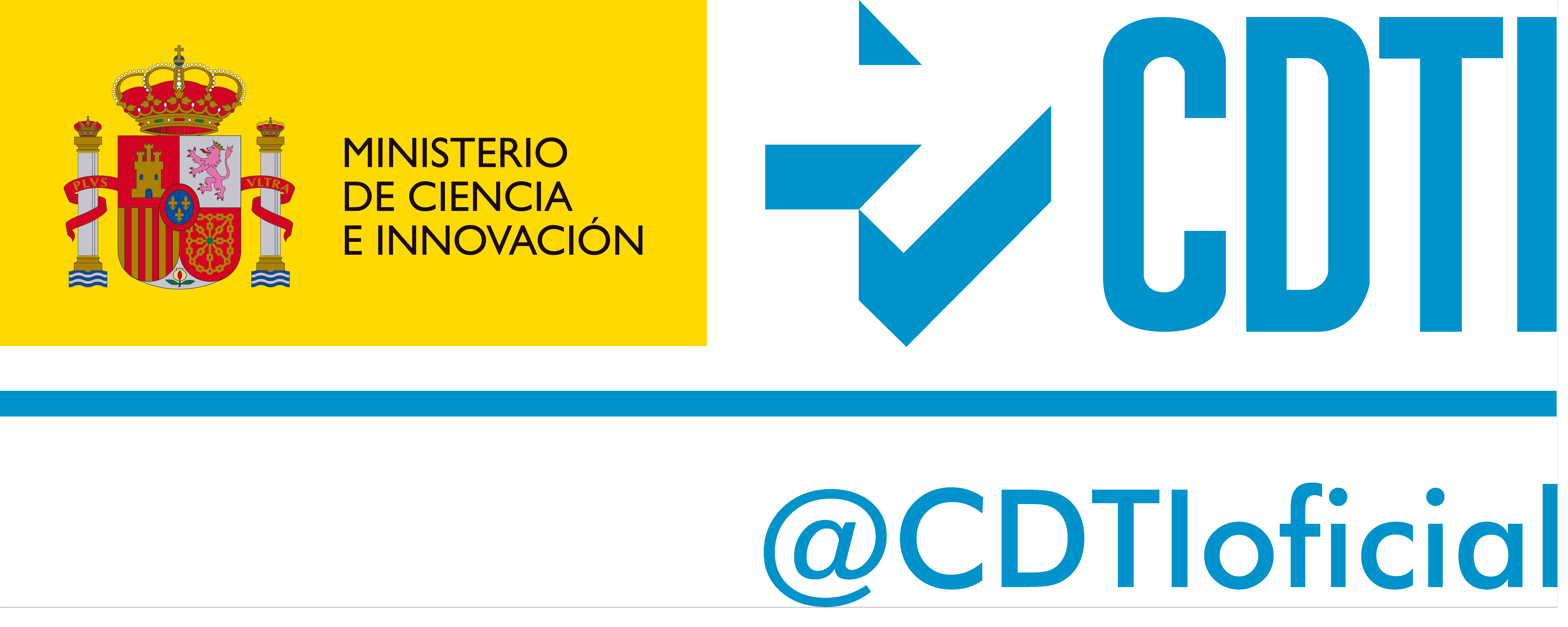
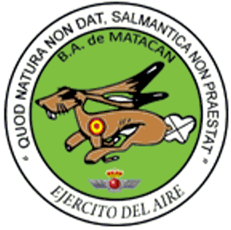
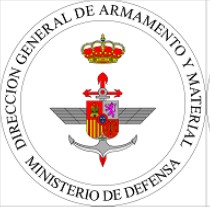
Espadín
ExpandESPADIN (ESPAcio de Datos de la INdustria) is a multi-sector and multidisciplinary R&D Consortium with effective collaboration, formed by technology companies, Industrial companies, including FCC Industrial and 3 relevant foundations or research centers that are a reference in Spain. This consortium is led by the company Capgemini.
The main objective of the ESPADIN project is to carry out research into various technologies, techniques, tools, methodologies and knowledge aimed at developing technological solutions to provide a response from the technology axis to the interoperability, governance and security/reliability of data spaces, researching technology for use in the industrial sector, contributing to the development of Industry 4. 0 in secure, sustainable and connected environments, and benefiting the sector through more efficient operations, maximizing the availability of the operations network, helping to react to adverse or unforeseen situations, and improving companies' access to supply chains and smart manufacturing processes.
In turn, ESPADIN will work in the context of data reliability and data-driven services by addressing specific use cases. The aim is to create cryptographic execution mechanisms that allow data providers to ensure the security and control over their data, as well as the imposition of data exploitation policies in accordance with the will of the data originator, known as data sovereignty, while guaranteeing the cybersecurity of the new connected industrial environments. In addition, technological mechanisms will be created to guarantee the integrity and provenance of data, thus increasing its reliability by the parties exploiting such data, as well as security mechanisms to protect the intellectual property of AI algorithms used by service providers on participants' confidential data, in order to enable new services based on data exchange and their exploitation.
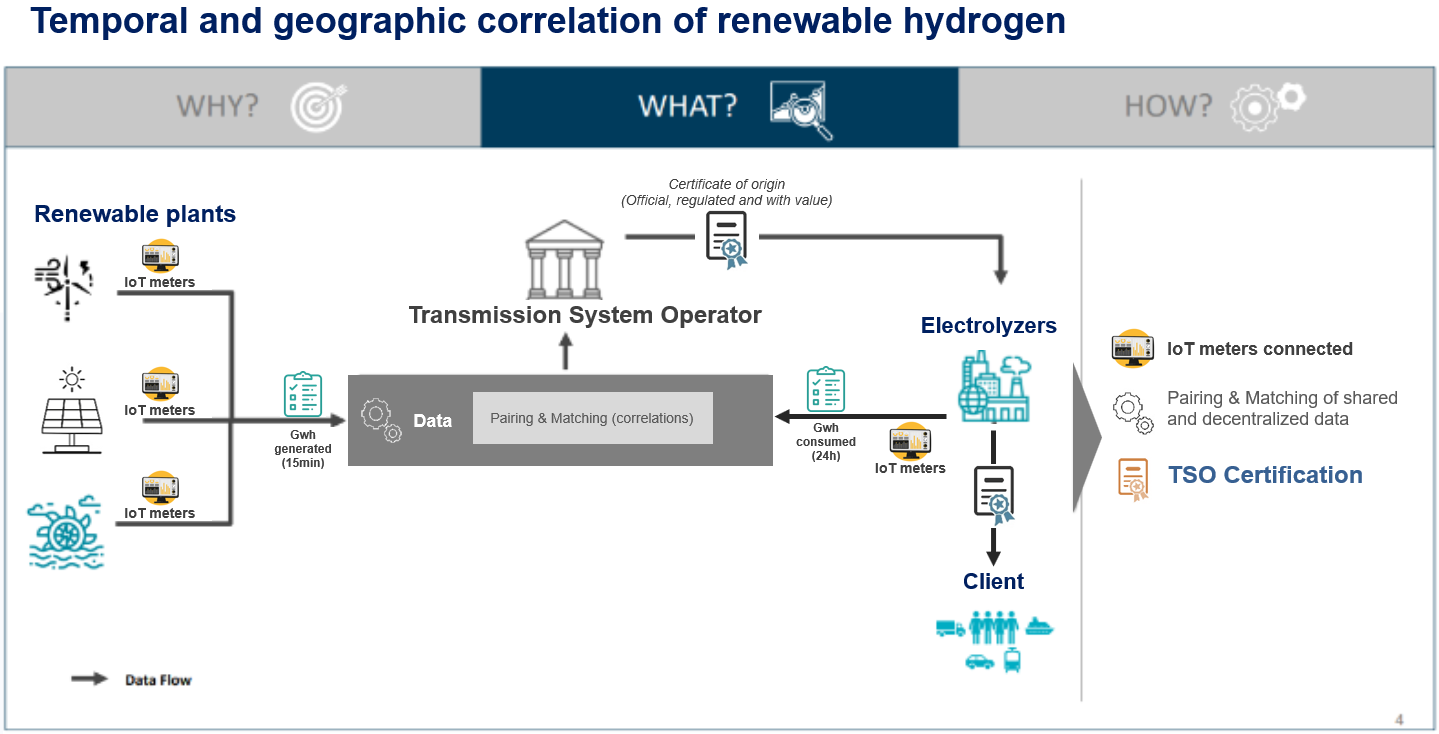

Use cases
